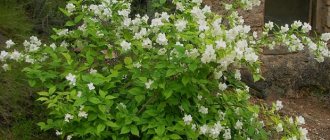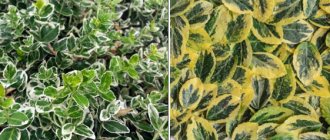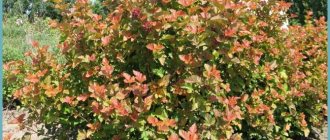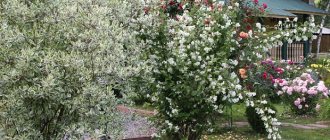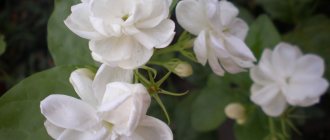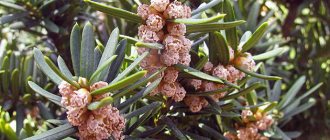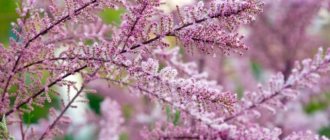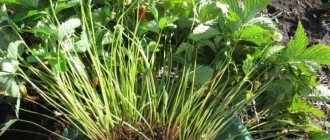The object of pride for any gardener, both a professional and a novice amateur, is the plants planted on the site, striking in their beauty and unusualness. Jasmine bushes can definitely be considered one of the most attractive plants. Everyone has been familiar with the aroma of this flower since childhood - the sweetish-exotic smell makes one’s head spin, filling everything around with a delightful fragrance. And the spreading bushes with snow-white flowers in the shape of stars never cease to amaze with their indescribable beauty.
This is interesting! If we look at history, we can note that the marvelous plant got its name in honor of the son of Cleopatra herself, who was very fond of various incense and fragrant flowers. In the old days, smoking pipes were made from young shoots, which were called “chubuk”. People call jasmine bushes “mock orange”. The hard wood of the bush is still used to make musical instruments such as flutes, pipes, and waxwings.
Varieties of jasmine varieties
Among the huge number of varieties of ornamental shrubs, breeders distinguish the main varieties, which include:
- Common crown jasmine with large inflorescences and bright green foliage. During the flowering period, the flowers emit a strong aroma. The size of an adult bush reaches a height of about three meters.
- Small-leaved jasmine is distinguished by its compactness (no more than a meter), small leaves and double flowers. The flowers exude a delicate sweetish aroma, reminiscent of the smell of ripe strawberries.
- Fluffy jasmine blooms much later than its counterparts. The flowers are not white, but rather cream-colored, and have virtually no odor. And if they smell, it is very gentle, barely perceptible. The bushes are tall, over 4 meters, have spreading branches and rich foliage.
Almost all other varieties of this ornamental plant are hybrids.
When choosing both the main type of jasmine and its hybrids, it is worth carefully studying all its characteristics and the best growing conditions. All this will allow you to admire the indescribable beauty and inhale the wonderful aroma of flowers, and caring for the plant will not cause any special difficulties or troubles.
Planting jasmine
As a rule, it is practiced to plant jasmine bushes in spring or autumn. Holes are dug for the seedlings, the depth of which is about 50 cm. It will be necessary to ensure that only the roots of the young plant are covered with soil, and the trunk is left on the surface to prevent it from rotting.
According to experienced gardeners, it would be preferable to plant shrubs in the fall (during the period: late September - early October) during a warm, clear day. Carrying out this procedure in the spring means planting before the leaves begin to form.
The soil needs preliminary digging and enrichment with nitrophosphate fertilizers. The nutritional complex is applied to the bottom of the hole (30 g/plant). It is very important not to allow the roots of the seedling to rest against the walls of the excavation when planting. To do this, it is advisable to provide a gap of at least 10 cm. The root collar is deepened 3 cm from the ground level. After planting the plant, the soil must be thoroughly compacted.
At the base of the seedling you need to make a funnel-shaped hole directed towards the trunk at a slight angle. This will ensure the retention of rain moisture and water during irrigation.
After the seedling takes root, its main branches are shortened and weak shoots are pruned. This procedure will make it possible to obtain a more spreading bush with a symmetrical, well-groomed crown. Many buds subsequently form on it.
The interval between planted plants is up to 1.5 m. If it is necessary to create a hedge of mock orange, it is worth reducing the distance between seedlings to 50 - 80 cm. At the end of the planting operation, the soil is moistened abundantly. Up to 2 buckets of water are poured under each bush.
Preparing the site for planting (soil)
Jasmine bushes are practically not demanding on the soil. However, the plant can delight you with abundant flowering only if it grows on fertile soil. When planting, you should take into account the fact that jasmine does not like stagnant moisture. In this regard, when planting young shoots, choose the highest areas or make artificial drainage by mixing sand, crushed stone, gravel and fragments of broken brick.
When planting jasmine shoots, you should prepare a hole about half a meter deep, fill it with fertile soil and add fertilizer. The root system should not be buried too deeply in the soil. It is enough to just sprinkle 3-4 cm of soil. Abundant watering and compacting the soil around the planted plant are mandatory!
Transplantation after purchase into open ground
Having once seen an ornamental bush, gardeners think about how to plant jasmine correctly so that it quickly adapts to a new place. There are no special tricks in transplantation, but some points are worth paying attention to.
Evening primrose perennial (flower): planting and care
Mock orange is unpretentious in choosing a site. It can develop normally on any soil, even depleted of nutrients. The only thing that matters is that the soil should not be saline.
It is better to purchase seedlings from nurseries where jasmine is grown in containers. Such plants can be moved at any time.
Important! For bushes with bare roots, the optimal replanting period is autumn or early spring. Plants with open leaves rarely take root.
Choosing the optimal location
If jasmine has no complaints about the choice of soil, then the plant has certain requirements for a permanent place:
- mock orange can exist in the shade, but it will bloom profusely only in the sun;
- the plant is moisture-loving, but the degree of soil moisture should be average; if it is high, a drainage layer is needed;
- Jasmine does not like loneliness, so it is better to plant it next to other bushes.
Note! You should not place mock orange in lowlands where moisture accumulates. When choosing sunny hills, you need to make sure that there are no drafts.
Step by step planting process
Planting a seedling is a familiar event for summer residents. There are some features in rooting jasmine that are important in the planting algorithm:
- in the prepared area, dig a hole 2 times larger than the roots with an earthen lump;
- a drainage layer of 15-20 cm of crushed stone or sand is laid on the bottom;
- then pour in the fertilized soil, leaving a free space from the top of the hole equal to the height of the container;
Planting mock orange
- the seedling is carefully removed from the container and placed in the center of the hole, straightening the roots;
- sprinkle them with earth, trying to keep the entire stem outside (otherwise there is a risk of rotting).
The soil is compacted and a watering circle is formed into which 2 buckets of water are added. Mulch is placed on top to keep the soil moist longer.
If you plan to create a hedge from jasmine, maintain a distance between bushes of about 0.5-0.8 m. In group plantings, this gap can be increased by one and a half meters.
Immediately after planting, you can begin to form the crown by removing weak branches and slightly shortening the main trunks. This stimulates the formation of additional buds.
Fertilizer and feeding of ornamental bushes
Part of the required fertilizer is applied during planting. The next time you should feed the bush only a year after planting - otherwise the young and still fragile root system can be seriously damaged and even “burn out.”
Both mineral and organic fertilizers are suitable for garden jasmine. When choosing a mineral fertilizer, mix 15 g of urea, 30 g of superphosphate and 15 g of potassium sulfide in a bucket of water. This solution is enough to feed one large or two young bushes.
Those who prefer organic fertilizers should dilute the slurry in cold water in a ratio of 1:10 and feed the plant before flowering. Wood ash is a good growth stimulator for jasmine bushes. By taking 100 g of ash and adding directly to the soil under the plant, you will ensure abundant flowering and accelerated growth of the bush.
Almost all year round (except for winter), you should weed and loosen the soil near the planted jasmine. A good solution would be to mulch the ground around the trunk with leaf humus or dried compost. This will retain moisture and improve air exchange near the root system.
Reasons for the lack of flowering in garden and indoor jasmine
Why Chubushnik does not bloom, poor growth
Knowing how many years it takes for jasmine to bloom, some gardeners note that time passes, but the buds never appear. In such a situation, you need to reconsider the care of the plant.
Lush leaves and lack of buds are a common problem.
Stagnation of moisture or lack of it
The plant loves moderate watering. Its excess leads to rotting of the roots, which is why the bush gradually fades.
When placing a shrub on a site, you need to choose the right place for it. It is prohibited to place the plant in places where groundwater passes close to the ground and in lowlands where water accumulates. Watering rules:
- regular and abundant;
- It is forbidden to use cold water and from the tap;
- watering is carried out with filtered or purified, settled water;
- It is recommended to add a few drops of acetic or citric acid to the water to acidify the liquid;
- if jasmine grows in a pot, the container should have drainage and holes in the bottom to allow residual water to escape.
Additional Information! The top layer of soil should dry out between waterings. Stagnation of water is also detrimental to home jasmine.
Insufficiently acidic soil
Jasmine should only be planted in acidic soil. If the soil is alkaline, jasmine buds will never appear.
Diseases and pests
One of the factors why garden jasmine does not bloom is its damage by insect pests or diseases. Pests:
- Aphids are large, green, and settle on the tops.
- The weevil settles in the soil near the plant and feeds on the sap of leaf blades.
- Spider mite - leaves are dotted with numerous dots, cobwebs are visible.
Diseases are indicated by yellowed or curled leaves, wilting of the entire bush, lack of growth, and falling leaves.
Diseases of the plant often lead to a slowdown in its development
Errors when applying fertilizers
The plant stops producing buds if it receives large quantities of nitrogen fertilizers. They promote the active growth of shoots and leaves, which is why the bush does not have the strength to form inflorescences. Recommended feeding mixture:
- urea 15 g;
- superphosphate 30 g;
- potassium sulfate 15 g;
- water 10 l.
Fertilizers must be alternated using mineral and organic substances.
Inappropriate lighting
If indoor jasmine does not bloom, what should I do? First of all, you need to check where the flowerpot is placed. Despite the fact that this plant is a light-loving plant, the lighting should be plentiful, but diffused, without direct sunlight. The sun causes the leaves to burn and fall off.
Additional Information! It is recommended to place the jasmine pot on the windowsills on the west or east side. On the north side it will not have enough lighting.
Temperature changes
Low temperatures at night and high temperatures during the day have a detrimental effect on the plant. It is easiest to eliminate this factor for jasmine that grows indoors. The optimal temperature is from +18 to +22.
No trimming
If the shoots are not trimmed in a timely manner, the bush will spend all its energy on their growth. Jasmine should be no more than 2 m long. If the height is 3 m or more, there will be no buds. Pruning should be regular, following a number of recommendations:
- Autumn - carried out after all the buds have withered. You need to trim off all dried inflorescences, bad and weak shoots. The cut areas should be treated with garden decoction.
- Spring – until early April. Those shoots that did not survive the winter well, old branches, and leaves left over from last year must be removed.
- Rejuvenating – carried out every 3 years. Old branches are completely cut off.
After pruning, the bush should be watered abundantly.
One of the mandatory measures is regular pruning.
Plant age
A bush that is too young and under 3 years old will not produce buds. All his strength goes into growth and strengthening.
Pruning and shaping the bush
Garden jasmine very often has an irregular (asymmetrical) shape. To give a neat and well-groomed appearance, the plant should be pruned regularly.
Here are just some basic rules for correct pruning:
- Formative pruning should be done in the spring, when the plant is still in a vegetative state (in the so-called “hibernation”);
- Long, protruding branches can be cut off completely, and small shoots can be shortened only by half.
- In order for jasmine to delight with abundant flowering, during the formation of the bush, all empty branches without buds should be cut off.
- An adult bush should be thinned out annually, leaving only the strongest branches and shoots.
- After the jasmine has faded, all dried flowers should be removed, otherwise the plant will lose all its attractive appearance.
What to do if jasmine does not bloom on your property or at home
Why amaryllis does not bloom at home - what to do
The absence of buds in a plant over 3 years old is a signal to the gardener that he is not caring for it correctly. To restore the condition of jasmine, it is necessary to carry out a number of measures to eliminate negative factors:
- normalize watering - it should be frequent, but without overwatering;
- change, if necessary, the location - diffused light or partial shade is needed;
- change fertilizers. If only nitrogen substances were introduced, it is necessary to alternately use mineral and organic feeds;
- normalize cropping. It should be regular, held in autumn and spring.
If the jasmine is on the street and all measures to resuscitate it have been in vain, it needs to be transplanted. Perhaps it's all about the soil being poor in nutrients and minerals.
Jasmine will thank you for comfort with delicate, beautiful petals.
Preparing the plant for frost
If an adult bush plant can withstand cold and frost without much hassle, then a young jasmine bush should be taken care of even before the first snow.
- Before the first frost, carefully dig up the soil around the plant (not too deep so as not to damage the roots), thereby providing additional oxygen to the root system and destroying excess weeds.
- To protect against frost, a thin layer of pine needles or compost should be sprinkled around the trunk. This will allow you to preserve the young jasmine roots that have not strengthened over the summer.
- In regions where there is a high probability of severe frosts, young bushes are completely wrapped in special covering material and tied not too tightly, but securely with rope (thin wire).
How to make mock orange bloom
In order for garden jasmine to delight you with its flowering, you must follow the basic rules for planting and care. The plant needs regular watering, timely weeding of the soil around the bush, and loosening the soil. It is advisable to plant the shrub in sunny areas with possible shading, where there is no constant stagnation of moisture.
Basic conditions for lush flowering.
- Fertilizer. Fertilizing with mineral fertilizers is carried out twice during the growing season. The first time is in the spring with the beginning of growth or at the moment of full bloom of the leaves. Presumably this is March-April. The second time is in the fall, starting from the last week of August until October. At the beginning of intensive growth of the bush, it is preferable to use nitrogen-containing preparations. During the formation and opening of flower buds, it is better to apply potassium fertilizers. Phosphorus compounds are added throughout the summer. Liquid fertilizers are considered the most effective.
- Trimming. At the end of June, garden jasmine should be pruned. Remove thickened shoots that grow inside the bush. Young shoots must be left in place so that the mock orange will bloom in the new season. Next year, in the spring, around March, it is worth thinning out the bush. Provided that it has grown greatly. We should not forget about rejuvenating the bush. Branches that are 10 or more years old should be removed at the root. By trimming the crown, there will be a powerful stimulation of the flowering and growth of mock orange.
- Most types of mock orange are frost-resistant. Even if the shoots freeze, they quickly recover. Shelter for the winter is not required. However, you need to take care of the root system before winter. The soil under the bushes is mulched with peat or pine needles with a layer thickness of 3-4 cm.
- At the moment of swelling of the buds, before and after the mock orange flowering period, it is recommended to carry out preventive spraying with insecticides and fungicides.
- If necessary, transplantation is carried out in early autumn or spring. First you need to water the bush generously and let it stand for 24 hours. Transplantation is carried out in the evening, after cutting off some of the dry shoots.
Shrub propagation
You can propagate garden jasmine bushes in the following ways:
- Seeds. This type of reproduction takes the longest time. By sowing seeds in open ground before frost sets in, in the spring you can only wait for the first shoots. A mature bush, capable of delighting you with full flowering, will appear only after 7-8 years. But on the other hand, seedlings grown from seeds are the most hardened and resistant to pests and diseases.
- By cuttings. Cut cuttings about 5 cm long should be rooted in a nutrient mixture at the beginning of summer. This mixture can be prepared by mixing peat and sand in equal parts. After rooting, they are transplanted into open ground and covered for some time with a transparent container (a cut plastic bottle or glass jar will do).
- By shoots. In the spring, during pruning, the strongest shoots are not removed, but are left for further growth. Next spring they are dug up, trying not to damage the mother bush, and transplanted to a new permanent place of growth.
- By layering. Having selected the largest branch (shoot), it is bent to the ground into a pre-made depression and sprinkled with soil on top. After 6-7 weeks, you can notice that the layering has begun to branch. And already at the beginning of autumn, the young bush can be transplanted from the mother bush to a new place.
- Dividing the bush. Not the most common, much less safe, propagation method is sometimes used by the most experienced gardeners. It is recommended to divide the root system in the fall, when the plant is ready for winter.
Types and varieties of Victor Lemoine suitable for growing in Russia
Breeder Lemoine bred about 40 hybrid varieties of mock orange. French breeders tried to preserve the incredible aroma of flowers by adding color accents to it or changing the shape of the petals and buds. The varieties suitable for cultivation in Russia are fragrant and beautiful, and are resistant to midland winters.
Mont Blanc
Barberry - planting and caring for shrubs
A very popular shrub variety. In landscape design it is used in single or group plantings. It reaches a height of 1 meter. If it grows in the shade, it can stretch up to 2 meters.
A special feature of the variety are the flowers - semi-double and small, collected in inflorescences of 3-5 pieces. The graceful arrangement of wide petals forms a square flower. The Mont Blanc variety emits a strawberry scent during flowering.
For reference! It blooms in the twentieth of June and blooms for about 40 days.
Glacier
Particularly frost-resistant variety. The shrub up to 1.5 meters high has beautiful oval leaves with smooth edges. The flowers are densely double, 4.5 cm in diameter, collected in 5-7 pieces per inflorescence.
Long plumes are formed from the inflorescences. Double jasmine blooms with white-cream fragrant flowers from mid-June and for three weeks.
Ermine Robe
The variety has a flowering duration of up to 50 days. This multi-stemmed, low (80 cm) shrub is covered with a white mantle during flowering. Long hanging lashes are strewn with bunches of inflorescences of 3-5 small flowers.
The flowers are semi-double and unusual with their narrow petals. It always blooms profusely, with a strawberry aroma.
Flowers of the Ermine Mantle variety
Diseases and pests. Fight them
The most common pests of jasmine bushes are leaf weevils, spider mites and aphids. Signs of plant damage can include leaves that dry out and turn yellow out of season, as well as the presence of thin cobwebs on the foliage, inflorescences and trunk.
You can get rid of pests by treating the bush with a solution of laundry soap or insecticidal preparations. Even pouring hot water over the plant helps.
Jasmine is one of the plants that are most resistant to various diseases. Only due to a lack of fertilizers and nutrients in the soil can the plant grow too slowly and practically not bear flowers. This can be easily corrected by adding a complex mineral fertilizer to the soil. The effect will not take long to appear - next spring you will be able to enjoy the beauty of flowering shrubs.
Flowering jasmine bush
The plant is thermophilic. Previously it grew only in the southern territory. Thanks to breeding, this shrub can now be grown in different conditions and regions. In demand for landscape design. To make it easy for the plant to grow, it should be monitored and dead areas should be removed periodically.
For what reasons does the shrub not bloom?
If the time has already come and the shrub is not growing, you should think about proper care for it. The reasons may be:
- height. It should not exceed three meters. The norm is considered to be from one to two meters. To avoid this, you need to periodically trim the shoots;
- water stagnation. Before planting, you should select such soil in advance so that there is no stagnation of water in it later. Otherwise, the plant will be sickly;
- pests, diseases, fungus. This disease can be detected if spots appear on the petals or the leaves dry out. To cure such a disease, you need to examine the lower leaves and the surrounding circle. If detected, treat it with special means in the form of insecticides or fungicides;
- young. It's not time to bloom yet. In the first years of life, the flower only has time to gain strength for the development of its root system;
- feeding It may not be correct if there is excess fertilizer. This situation can be corrected by adding potassium sulfate or superphosphate to the soil;
- shadow. Only some species are capable of growing in the shade. Therefore, in order to avoid subsequent consequences, you need to immediately become familiar with the species and its needs for proper planting.
Landscape location
When planting either single or several jasmine bushes, you should consider the location and landscape composition. Tall varieties of jasmine are usually planted alone in the garden, but low-growing varieties can be planted in such a way that the bushes serve as a hedge. Decorative bushes are also used as a background for flower beds. Pink peonies or phlox will look good against the background of jasmine blooming in white clusters. Cut branches of blooming jasmine are used to make bouquets.
Description of jasmine
Jasmine is a flower with petals of yellow, pink and white. Its stem is curly in shape. It begins to grow two years after planting. This flower grows very quickly. Its height can reach ten meters.
To avoid damage to the bush, you need to periodically bring it into shape by pruning. With proper care of the flower, the jasmine stem becomes overgrown with wood and becomes more stable and beautiful, which makes it a “decoration” of any interior. Does not require special care. Blooms every year.
Main characteristics:
- Blooms in summer. About fifty days.
- The color is mostly white. Only some types of varieties may have inclusions on the petals.
- Abundant flowering covers the entire stem of the flower.
- Aroma. Some species are fragrant with the aroma of strawberries and pineapple.
Caring for Jasmine Sambac
Among the most common and most interesting types are:
- Sambac is the most unpretentious variety and tolerates warm winters well. Its shoots grow up to 6 meters. White, fairly large flowers with a pronounced aroma are collected in racemes. Blooms from early spring to mid-autumn;
The remarkable thing about the Sambac variety is its unpretentiousness, compared to other varieties of jasmine.
- Multi-flowered jasmine is characterized by strong branching. Can reach a height of about 2 meters. The buds are pink in color, and the flowers are white after blooming. It has the strongest aroma among other varieties. It begins to bloom at the end of winter and ends in August;
- Holofloral jasmine branches weakly, and there are few leaves on the shoots. In winter, the leaves fall off completely or partially. The flowers are bright yellow and reach a diameter of about 3 cm. They bloom from January to April.
- Jasmine Beauty of India. This species was bred by Indian breeders. It belongs to the category of fast-growing shrubs or vines. It is characterized by flowers of regular shape with two stamens located inside. This jasmine can bloom all year round.
- Jasmine Arabian Knights. This plant belongs to the rapidly growing bushes. Favorable conditions for growing are sunny and shady places. Watering should be moderate. This variety blooms from March to October.
- Jasmine Indiana. This species was first grown in India. Externally, the plant is similar to both a shrub and a liana. The diameter of its fragrant and double flowers is 1.5 cm. It can bloom both in the sun and in the shade all year round. Watering should be moderate. Compared to other varieties, this plant requires higher air temperatures to flower.
- Jasmine Mali Chat. Refers to slowly growing shrubs. The diameter of the fragrant, double flowers is 1.5 cm. Growing and caring for it requires certain knowledge and skills. Like most types of Sambac jasmine, it blooms all year round in both shade and sun.
- Jasmine Maid of Orleans. It is considered a fast-growing shrub. This species was bred by Indian breeders. Regularly shaped flowers remain in bloom for one day, after which they fall off, replaced by new ones. When growing this species, an excess of soil moisture should not be allowed.
- Choose a suitable place for growing. This is a light-loving culture. In winter, for good growth and flowering, you need to provide it with additional lighting so that daylight hours last for at least sixteen hours. Otherwise, the jasmine may die.
- Create optimal air temperature. You need to grow and care for sambac jasmine in a room where the temperature will be between 16-20 degrees in winter, and not exceed 25-30 degrees in summer.
- Provide regular watering. This indoor plant needs constant and moderate watering. In a cool room, watering is not necessary often, but in dry air intensive humidification is required.
- Perform pruning and fertilizing of the plant. In order for the jasmine bush to grow beautiful and neat, you need to prune it with the onset of spring. Weak and thin shoots must be completely removed, and long shoots must be shortened by two-thirds. After the end of the first wave of flowering, the stems need to be pinched or trimmed a little. In this way, new growth of flower shoots will start. Once a month, fertilize the plant with special products, which include phosphorus, potassium, and nitrogen.
Many housewives are faced with the question - what to do if jasmine does not bloom? There may be several reasons for this:
- insufficient soil moisture;
- dry or cold indoor air;
- soil is not acidic enough;
- using chlorinated tap water to moisten the soil;
- deepening the root collar when planting in the soil by more than 3 cm.
By eliminating these causes and providing proper care, such a shrub will bloom for many years.
Home care
In order for the plant to grow at home, its care should be as follows:
- The soil. She must be well prepared. If necessary, you can add deciduous clay soil or sand to the soil. You can also add a little peat.
- Lime or water. If it is not possible to add a little lime, the flower can be watered with oxidized water. The main thing is to never pour more water than it requires.
- In warm weather, place on the balcony. In warm regions, this type of flower is recommended to be planted in open ground. During the warm season, the leaves need to be sprayed with water regularly.
- Temperature. It is necessary to maintain the temperature. It should not exceed twenty-three degrees and fall below sixteen degrees Celsius.
- Fertilizer. The flower needs to be fed with all kinds of fertilizers. The important point is that this should be done no more than once every two weeks.
- Watering. The plant should be watered as often as the soil dries out, but no more than several times a week. In winter, watering is reduced significantly.
- Trimming. Shoots need to be pruned because this is the main factor for flowering. To begin with, dry areas of the plant are removed, followed by bare shoots.
- Light. If it is not possible to expose jasmine to light, an artificial source will suffice.
Pests and diseases, their treatment
The variety that produces stronger odors repels pests. But even in these cases, if it is not properly cared for, diseases may develop or pests may visit.
Table: Insect pests of jasmine
| Pest name | Application |
| Jasmine aphid | Signs: If dark spots begin to appear on the leaves or they begin to dry out, turn yellow and fall off; The shoots dry up and the buds fall off. Take action: plant plants under the bush that attract insects (dill). You can sprinkle ash near the trunk, water the soil with hot water, or periodically loosen the soil to kill aphids. The leaves can be sprayed with a soap solution. You can use biological products in the form of Jaguar, Iskra-bio, or insecticides - Karbafos and Iskra. |
| Mealybug | Signs: White formation on the leaves in the form of lumps. This insect leaves behind sticky marks. Take action: make a solution of water and soap, one teaspoon each, and add two tablespoons of vodka. You can also treat with insecticides in the form of: Golden Spark, Mospilan, Metaphos, etc. With this product you need to spray not only the plant itself, but also the soil underneath it. Treatment should last for four days using different means. |
| Spider mite | Signs: Small spots with sticky marks and formed by cobwebs. This type of pest is very small in size, which makes it almost impossible to see or notice it. It does not allow the plant to begin to bloom. Take action: In this case, you first need to get rid of the affected leaves, put a cotton swab in the soil of the plant, which should first be soaked in garlic or onion juice, and then cover the plant with a plastic bag for two to three days. After time has passed, you need to treat it with a soap solution. The drugs for completion will be: Akarin, Fitoverm, Bitoxibacillin. |
| Shchitovka | Signs: This pest likes to hide under the layer of the plant, in places where it is difficult to remove. What to do: Remove insects from the jasmine and then treat it with a soap solution. |
| Whitefly | Signs: The leaves on the plant curl, turn yellow, and then fall off. In this case, on the back side of the leaf there will be larvae and insects of a greenish tint. Action: Get rid of insects and treat with insecticides. |


